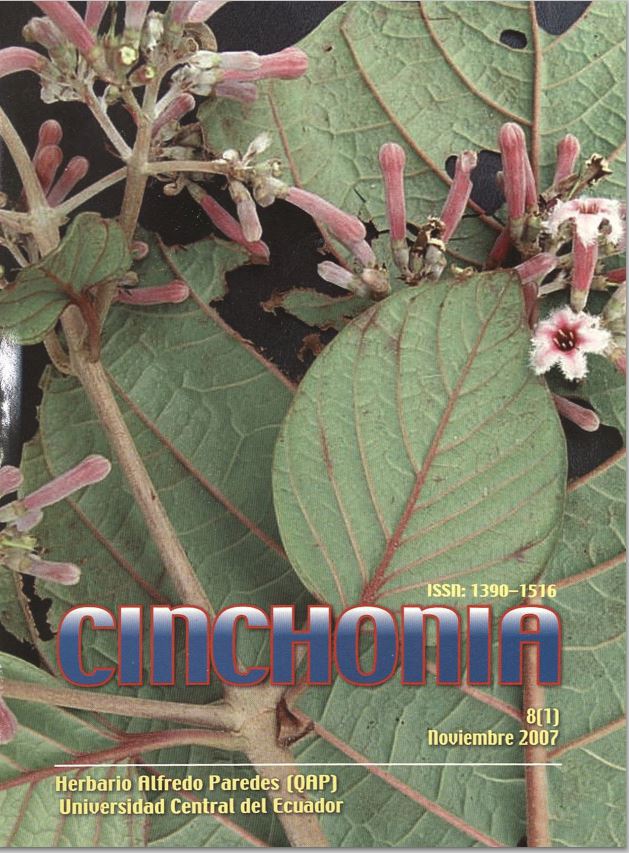COMPOSICIÓN Y ESTRUCTURA DE UNA HECTÁREA DE BOSQUE EN LA CORDILLERA DEL PASO ALTO, SAN JOSÉ DE MINAS, PICHINCHA - ECUADOR
Main Article Content
Abstract
The research was developed in Paso Alto Cordillera, located in the foothills of the Western Cordillera of the Andes, San José de Minas, Cantón Quito, Pichincha Province, The study site covers an altitudinal range from 1,600 to 3,100 m, coordinates 78°27’30” y 108 Jiménez: Composición y Estructura, Paso Alto 78°35’00” W y 00°08’30” y 00°15'00” N. The natural forest belong to Siempreverde montano bajo forest and the neblina montano forest. The fieldwork was developed from September 1998 to June 1999, in right bank of the Cambugán river (owned by the researcher). A permanent plot one hectare of 10 x 1000 m, was established. The plot was divlded into 10x10 m subplots inside each subplot, were collected all botanical species > 5 cm DAP, To every analyzed individual was placed an numbered aluminum píate. The botanical samples collection can be found at Alfredo Paredes (QAP) Herbarium. The basal Area and Importance Valué Index, was calculated in base of each individual diameters. A total of 1,411 individuáis, 132 species, 84 genera and 51 families of plants were found. The 17.15% of the individuáis was found in a fertile State. The Total Basal area was 40.14 square meters. The most common species were: Palicourea demissa, Ossaea micrantha, Nectandra membranácea, Chrysochlamys colombiana and Delostoma integrifolium. The most frequent genera were: Palicourea, Ficus, Ossaea, Nectandra and Miconia. The more frequent families were: Rubiaceae, Melastomataceae, Euphorbiaceae, Moraceae and Lauraceae. According to the IVI, the most important species were: Palicourea demissa, Delostoma integrifolium, Weinmannia kunthiana, Cornus peruviana and Chrysochlamys colombiana. Ossaea micrantha The results show that the most common species, is not listed as the most important specie, probably because this specie shaft is quite thin, instead appears the specie Cornus peruviana. The canopy is compound by 296 individuáis who correspond to 21%, the presence of lianas and vines are 8 species and together represent 1.27 m2 of Basal Area. The emergent trees reaches 40 meters in height. The Subcanopy if compound by 1,008 trees and equivalent to 71.4%. The understory is located between 1.5 and 5 m high, and was compound by 107 small trees corresponding to 7.6%. The plants from the genus Myrcia and Meliosma appears to be likely new species for the Science. This study results show the existence of an altitudinal range plant distribution, so it would be advisable to develop at different altitudinal levels permanent plots with the objective to study microhabitats variation that could be expressed as changes in diversity, structure and composition of individuáis, species, genera and families.

